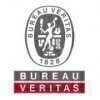
i
Medhaj Techno
Concept
Filter interviews by
Medhaj Techno Concept Interview Questions and Answers
44 Interview questions
The spacing between phase conductors of a 220 kV line is approximately 6 meters.
The spacing between phase conductors is crucial for maintaining safety and efficiency in power transmission.
Proper spacing helps prevent electrical arcing and ensures reliable operation of the transmission line.
In the case of a 220 kV line, a spacing of around 6 meters is commonly used to meet safety standards and minimize interference...
The minimum clearance between the ground and a 220 Kv line is approximately -7 meters.
The negative clearance of -7 meters indicates that the 220 Kv line is below ground level.
This clearance is important to prevent any contact between the line and the ground or any structures.
Proper clearance ensures safety and prevents electrical hazards.
Example: If the ground level is at 0 meters, the 220 Kv line would be 7 meter...
Earthing is the process of connecting electrical systems to the ground to ensure safety and prevent electrical shock.
Provides a safe path for fault currents to flow into the ground.
Reduces the risk of electrical shock to users.
Helps in stabilizing voltage levels in electrical systems.
Example: In homes, earthing is done through grounding rods or plates.
Essential for lightning protection systems.
A transformer is an electrical device that transfers electrical energy between circuits through electromagnetic induction.
Transforms voltage levels: Increases (step-up) or decreases (step-down) voltage for efficient power transmission.
Used in power distribution: Essential for transmitting electricity over long distances to reduce energy loss.
Example: Step-up transformers in power plants boost voltage for transmiss...
A single line diagram illustrates the flow of electrical power from generation to distribution.
Power Generation: Includes sources like thermal, hydro, and solar plants.
Step-Up Transformer: Increases voltage for efficient transmission.
Transmission Lines: High voltage lines transport electricity over long distances.
Substation: Steps down voltage for distribution; includes transformers and switchgear.
Distribution Lin...
Step-up and step-down voltage are essential for efficient power transmission and device compatibility in electrical systems.
Step-up transformers increase voltage for long-distance transmission, reducing energy loss.
Example: Power plants use step-up transformers to send electricity over high-voltage lines.
Step-down transformers decrease voltage for safe use in homes and businesses.
Example: Substations use step-down...
The main element of any structure is its foundation.
The foundation provides stability and support for the entire structure
It distributes the weight of the structure evenly
Examples include concrete footings, pilings, and slabs
Nodes in Stadd Pro are points where structural members meet or intersect.
Nodes are used to define the geometry of the structure.
Nodes are connected by members to form the structural system.
Nodes can have different properties assigned to them such as supports or loads.
Examples of nodes include column bases, beam ends, and connection points.
Slump tests are conducted to measure the workability of concrete mix.
Slump tests help in determining the consistency and quality of concrete mix.
They are important in ensuring that the concrete can be easily placed and compacted.
Results of slump tests can indicate if adjustments need to be made to the mix design.
Common slump test methods include the standard slump test, modified slump test, and compacting factor t...
Lapelength is the measurement of the length of the lapel on a garment, typically a suit jacket or blazer.
Lapelength is an important factor in determining the overall look and style of a jacket.
It can vary depending on the design and cut of the jacket.
A shorter lapelength is often seen on more modern and trendy jackets, while a longer lapelength is more traditional.
The lapelength can also affect the perceived propo...
Medhaj Techno Concept Interview Experiences
52 interviews found
I applied via LinkedIn and was interviewed before Apr 2023. There was 1 interview round.
(7 Questions)
- Q1. What is lapelenth
- Ans.
Lapelength is the measurement of the length of the lapel on a garment, typically a suit jacket or blazer.
Lapelength is an important factor in determining the overall look and style of a jacket.
It can vary depending on the design and cut of the jacket.
A shorter lapelength is often seen on more modern and trendy jackets, while a longer lapelength is more traditional.
The lapelength can also affect the perceived proportion...
- Q2. Modular Brick size
- Q3. Size of cube standard size
- Ans.
The standard size of a cube is determined by the industry or application it is being used for.
The size of a cube can vary depending on the industry or application it is used for
In construction, a standard size cube for testing concrete strength is 150mm x 150mm x 150mm
In gaming or design, a standard size cube may be smaller for ease of handling and manipulation
- Q4. Normal mix and design mix difference
- Ans.
Normal mix is a standard mix of concrete while design mix is customized based on specific requirements.
Normal mix is a standard mix of concrete with fixed proportions of cement, sand, and aggregates.
Design mix is customized based on specific requirements like strength, durability, workability, etc.
Design mix is prepared by a mix design engineer using various tests and calculations.
Example: Normal mix for M20 grade conc...
- Q5. 1st class brick strength
- Q6. Minimum Dia of chair bar
- Ans.
Minimum Dia of chair bar is typically 6mm to 16mm depending on the structural requirements.
Chair bars are used to maintain the spacing between the main reinforcement bars in a concrete structure.
The minimum diameter of chair bars is usually between 6mm to 16mm, depending on the size and spacing of the main reinforcement bars.
The chair bars help to ensure proper concrete cover and prevent the main reinforcement bars fro...
- Q7. Why are Slump test
- Ans.
Slump tests are conducted to measure the workability of concrete mix.
Slump tests help in determining the consistency and quality of concrete mix.
They are important in ensuring that the concrete can be easily placed and compacted.
Results of slump tests can indicate if adjustments need to be made to the mix design.
Common slump test methods include the standard slump test, modified slump test, and compacting factor test.
Interview Preparation Tips
I applied via Company Website and was interviewed in Oct 2024. There were 2 interview rounds.
MCQ question Electrical & Reasoning
(5 Questions)
- Q1. What's is transformer & why use
- Ans.
A transformer is an electrical device that transfers electrical energy between circuits through electromagnetic induction.
Transforms voltage levels: Increases (step-up) or decreases (step-down) voltage for efficient power transmission.
Used in power distribution: Essential for transmitting electricity over long distances to reduce energy loss.
Example: Step-up transformers in power plants boost voltage for transmission l...
- Q2. Why step up & step down voltage
- Ans.
Step-up and step-down voltage are essential for efficient power transmission and device compatibility in electrical systems.
Step-up transformers increase voltage for long-distance transmission, reducing energy loss.
Example: Power plants use step-up transformers to send electricity over high-voltage lines.
Step-down transformers decrease voltage for safe use in homes and businesses.
Example: Substations use step-down tran...
- Q3. What is power factor and frequency
- Q4. What's is Earthing
- Ans.
Earthing is the process of connecting electrical systems to the ground to ensure safety and prevent electrical shock.
Provides a safe path for fault currents to flow into the ground.
Reduces the risk of electrical shock to users.
Helps in stabilizing voltage levels in electrical systems.
Example: In homes, earthing is done through grounding rods or plates.
Essential for lightning protection systems.
- Q5. Draw Single line diagram of generation & distribution
- Ans.
A single line diagram illustrates the flow of electrical power from generation to distribution.
Power Generation: Includes sources like thermal, hydro, and solar plants.
Step-Up Transformer: Increases voltage for efficient transmission.
Transmission Lines: High voltage lines transport electricity over long distances.
Substation: Steps down voltage for distribution; includes transformers and switchgear.
Distribution Lines: L...
Interview Preparation Tips
I applied via Company Website and was interviewed in Dec 2024. There was 1 interview round.
(2 Questions)
- Q1. 400 kv foundation related & Classification of foundation related questions
- Q2. Stringing related
(4 Questions)
- Q1. How many Type of tower.?
- Q2. What is the classification of tower
- Ans.
Towers can be classified based on their purpose, structure, or location.
Classification based on purpose: communication towers, observation towers, water towers
Classification based on structure: lattice towers, guyed towers, monopole towers
Classification based on location: urban towers, rural towers, coastal towers
- Q3. How much type of soil.
- Ans.
There are three main types of soil: sand, silt, and clay.
Sand soil is gritty and drains quickly, but doesn't hold nutrients well.
Silt soil is smooth and retains moisture, but can become compacted easily.
Clay soil is sticky and holds nutrients well, but drains poorly.
Loam soil is a mixture of sand, silt, and clay, ideal for gardening.
- Q4. How to identify type of tower?
- Ans.
Identifying the type of tower involves examining its structure, height, location, and purpose.
Check the height of the tower - taller towers are usually used for communication purposes
Look at the structure of the tower - lattice towers are common for power transmission
Consider the location of the tower - coastal areas may have lighthouses or radar towers
Identify any antennas or satellite dishes on the tower - indicative...
(6 Questions)
- Q1. What is main element of Any Structure
- Ans.
The main element of any structure is its foundation.
The foundation provides stability and support for the entire structure
It distributes the weight of the structure evenly
Examples include concrete footings, pilings, and slabs
- Q2. Development length of Welded Rod
- Ans.
Development length of Welded Rod is the length of the embedded portion of the rod required to develop the full strength of the rod.
Development length is influenced by factors such as diameter of the rod, type of material, and type of welding process used.
It is important to calculate the development length accurately to ensure the structural integrity of the welded rod.
Examples of factors affecting development length in...
- Q3. How you will going to manager the work
- Ans.
I will manage the work by setting clear goals, delegating tasks effectively, monitoring progress, and providing support to team members.
Set clear goals and objectives for the project
Delegate tasks based on team members' strengths and expertise
Monitor progress regularly and adjust plans as needed
Provide support and guidance to team members to ensure successful completion of tasks
- Q4. Design factor of steel
- Ans.
Design factor of steel refers to the safety factor used in structural design to account for uncertainties and variations in material properties.
Design factor is typically a value greater than 1 to ensure the structure can safely support the intended loads.
Common design factors for steel structures range from 1.5 to 2.5, depending on the level of risk and safety required.
Factors such as material quality, fabrication pro...
- Q5. What are the node in Stadd Pro
- Ans.
Nodes in Stadd Pro are points where structural members meet or intersect.
Nodes are used to define the geometry of the structure.
Nodes are connected by members to form the structural system.
Nodes can have different properties assigned to them such as supports or loads.
Examples of nodes include column bases, beam ends, and connection points.
- Q6. Did you know MS Excell
- Ans.
Yes, I am proficient in MS Excel and have experience using it for data analysis and project management tasks.
Proficient in creating and managing spreadsheets
Experience with data analysis and visualization
Used Excel for project management tasks such as tracking progress and creating Gantt charts
(2 Questions)
- Q1. Your Location is in Azamgarh
- Q2. When you will going to be joined
- Ans.
I will be joining the team on June 1st, 2022.
I have accepted the offer and will start on the agreed upon date.
I am excited to join the team and contribute to the project.
I have already informed my current employer about my resignation.
I am in the process of wrapping up my current projects to ensure a smooth transition.
Interview Preparation Tips
Skills evaluated in this interview
I appeared for an interview in Apr 2025, where I was asked the following questions.
- Q1. Advance Excel, Lookup, MS Office
- Q2. Communication Skill
- Q3. E-mail handling, Reports like MPR.
(2 Questions)
- Q1. Dissuasion for past company work
- Q2. Asking qualification
(2 Questions)
- Q1. Types of brick and how to check brick quality, Cement IS code and how to check quality, Pipe IS code
- Ans.
Types of brick, how to check brick quality, Cement IS code and quality check, Pipe IS code
Types of bricks include clay bricks, concrete bricks, fly ash bricks, etc.
To check brick quality, look for uniform shape, size, color, sound when struck, and absence of cracks.
Cement quality is checked using IS code 12269:1987. Quality can be checked by conducting tests like fineness, setting time, compressive strength, etc.
Pipe q...
- Q2. Asking, BBS Over had tank , Pipe jointing , and other questions
(1 Question)
- Q1. Salary dissuasion,
I appeared for an interview in Nov 2024, where I was asked the following questions.
- Q1. What is foundation work activities.
- Ans.
Foundation work activities involve preparing and constructing the base of a structure to ensure stability and support.
Site Preparation: Clearing the area of vegetation and debris.
Excavation: Digging trenches or holes for footings and foundations.
Formwork: Creating molds for concrete to shape the foundation.
Reinforcement: Adding steel bars or mesh to strengthen concrete.
Pouring Concrete: Filling the formwork with concre...
- Q2. Which type of tools are used in tower erection
- Ans.
Tower erection requires specialized tools for safety, precision, and efficiency during construction and maintenance.
Crane: Used for lifting heavy sections of the tower into place.
Rigging Equipment: Includes slings and shackles for securing loads.
Torque Wrench: Ensures bolts are tightened to the correct specifications.
Safety Harnesses: Essential for worker safety at heights.
Leveling Instruments: Used to ensure the tower...
- Q3. Which type of insulator are used in 132 KV transmission line
- Ans.
132 KV transmission lines typically use porcelain or composite insulators for effective insulation and mechanical strength.
Porcelain insulators are commonly used due to their high mechanical strength and resistance to environmental factors.
Composite insulators, made from materials like silicone rubber, offer lightweight and high-performance insulation.
Insulators are designed to withstand high voltage and prevent electr...
Interview Preparation Tips
I applied via Walk-in and was interviewed before Dec 2023. There were 3 interview rounds.
(2 Questions)
- Q1. Work experience
- Q2. Last company details and qualifications
(2 Questions)
- Q1. Brick test compressive strength, Over hand tank like columns dom zik etc.
- Q2. Quality test cement test , cube test , slump , temperature test curing HDPE pipe IS code life , Manhole , Pipe laying etc
(1 Question)
- Q1. Salary dissuasion
I appeared for an interview in Nov 2023.
(3 Questions)
- Q1. Customer service
- Q2. Customer rating
- Q3. Products service
(3 Questions)
- Q1. Online service products view the customer service
- Q2. Customer impress
- Q3. Customer rating
Marketing and sales management
Every products customer satisfaction
Customer ratings ponits
Company products reach the customer
Products delivered online or offline
Customer service and satisfied
Customer ratings and satisfied
Customer service equipment
Interview Preparation Tips
I applied via Approached by Company and was interviewed in Apr 2024. There was 1 interview round.
(1 Question)
- Q1. Brief knowledge of civil engineering and building construction
Top trending discussions






Medhaj Techno Concept Interview FAQs
Some of the top questions asked at the Medhaj Techno Concept interview -
The duration of Medhaj Techno Concept interview process can vary, but typically it takes about less than 2 weeks to complete.
Tell us how to improve this page.
Medhaj Techno Concept Interviews By Designations
- Medhaj Techno Concept Deputy Manager Interview Questions
- Medhaj Techno Concept Electrical Engineer Interview Questions
- Medhaj Techno Concept Senior Engineer Interview Questions
- Medhaj Techno Concept Field Engineer Interview Questions
- Medhaj Techno Concept Project Engineer Interview Questions
- Medhaj Techno Concept Engineer Interview Questions
- Medhaj Techno Concept Field Supervisor Interview Questions
- Medhaj Techno Concept Manager Interview Questions
- Show more
Interview Questions for Popular Designations
- Deputy Manager Interview Questions
- Electrical Engineer Interview Questions
- Senior Engineer Interview Questions
- Field Engineer Interview Questions
- Senior Executive Interview Questions
- Software Engineer Interview Questions
- Senior Associate Interview Questions
- Sales Executive Interview Questions
- Show more
Overall Interview Experience Rating
based on 51 interview experiences
Difficulty level
Duration
Interview Questions from Similar Companies
Medhaj Techno Concept Reviews and Ratings
based on 807 reviews
Rating in categories
|
Deputy Manager
168
salaries
| ₹4.8 L/yr - ₹10 L/yr |
|
Senior Engineer
151
salaries
| ₹2.4 L/yr - ₹7.6 L/yr |
|
Field Engineer
144
salaries
| ₹1.5 L/yr - ₹4.2 L/yr |
|
Electrical Engineer
122
salaries
| ₹1.5 L/yr - ₹4.2 L/yr |
|
Project Engineer
93
salaries
| ₹1.8 L/yr - ₹4.8 L/yr |

Bureau Veritas

CMS Infosystems

Intertek

TÜV NORD
- Home >
- Interviews >
- Medhaj Techno Concept Interview Questions












